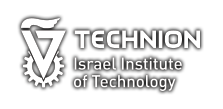Academic
Assistant Professor, head of the Magneto-Electro-Mechanical Smart Materials lab, Department of Materials Science and Engineering, Technion – starting March 2021
Postdoctoral Research Associate, Dept. of Materials Science and Metallurgy, University of Cambridge, UK, 2015-2020
Education
B.Sc. cum laude, EE Department, Technion, 2003
M.Sc. EE Department, Technion, 2010
Ph.D. EE Department, Technion, 2014
Awards:
Excellence in admission prize (1999), Russell Berrie Nanotechnology Institute Scholarship for Excellent PhD students (2012), Ministry of Science and Technology travel scholarship (2013), Wolfson College Research Associate (2016), JECS Trust travel grant (2019).
See full list on my Google Scholar page“Time-resolved open-circuit conductive atomic force microscopy for direct electromechanical characterization”; Y Calahorra, W Kim, J Vukajlovic-Plestina, A Fontcuberta i Morral, Sohini Kar-Narayan, Nanotechnology, invited (Special Issue on Nanowires) 2020
https://doi.org/10.1088/1361-6528/ab9b4b
“Strain-Mediated Bending of InP Nanowires through the Growth of an Asymmetric InAs Shell”; Y Greenberg, A Kelrich, S Cohen, S Kar-Narayan, D Ritter, Y Calahorra, Nanomaterials 2019
https://doi.org/10.3390/nano9091327
“Highly sensitive piezotronic pressure sensors based on undoped GaAs nanowire ensembles”; Y Calahorra*, A Husmann*, A Bourdelain, W Kim, J Vukajlovic-Plestina, C Boughey, Q Jing, A Fontcuberta i Morral, Sohini Kar-Narayan, Journal of Applied Physics D, 2019
https://doi.org/10.1088/1361-6463/ab1386
“Nanoscale electromechanical properties of hierarchically self-assembled cellulose nanofibers”; Y Calahorra*, A Datta*, J Famelton, D Kam, O Shoseyov, S Kar-Narayan, Nanoscale 2018
https://doi.org/10.1039/c8nr04967j
“Mapping piezoelectric response in nanomaterials using a dedicated non destructive scanning probe technique”; Y Calahorra, M Smith, A Datta, H Benisty, S Kar-Narayan, Nanoscale 2017
http://pubs.rsc.org/en/content/articlehtml/2017/nr/c7nr06714c
“Exploring piezoelectric properties of III-V nanowires using piezo-response force microscopy”; Y Calahorra, X Guan, NN Halder, M Smith, S Cohen, D Ritter, J Penuelas, S Kar-Narayan, Semiconductor Science and Technology (Special Issue on Piezotronics) 2017
http://iopscience.iop.org/article/10.1088/1361-6641/aa6c85
“Localized electromechanical interactions in ferroelectric P(VDF-TrFE) nanowires investigated by scanning probe microscopy”; Y Calahorra, R A Whiter, Q Jing, V Narayan, S Kar-Narayan, APL Materials 2016
http://aip.scitation.org/doi/abs/10.1063/1.4967752
“Young’s Modulus, Residual Stress, and Crystal Orientation of Doubly Clamped Silicon Nanowire Beams”; Y Calahorra, O Shtempluk, V Kotchetkov, Y Yaish, Nano Letters 2015
http://pubs.acs.org/doi/abs/10.1021/nl5047939
“On the diameter dependence of metal-nanowire Schottky barrier”; Y Calahorra, E Yalon, D Ritter, Journal of Applied Physics 2015
My research spans the whole range from basic materials properties to application, and is focused on understanding the interface between two properties, e.g. coupling between electrical and mechanical phenomena. I aim to gain fundamental knowledge about a wide range of materials to utilize in novel beneficial and desirable applications. In recent years this has taken the form of studying nanoscale piezoelectric (eletro-mechanical coupling) and magnetoelectric (magnetic-electrical coupling) properties in polymers, biomaterials and semiconductors for sensing and actuation.
In the next few years the main directions in the MEMSM lab will include:
- Exploring ways to control and enhance piezoelectricity in bio- and biocompatible materials through size down scaling and structuring
- Studying piezoelectric semiconductors in forms ranging from nanowires to porous materials
- Create composites comprised of magnetostrictive and piezoelectric materials to realize magnetoelectric materials
- Explore applications based on piezoelectric materials and/or magnetoelectric composites
- One particular goal is to create biocompatible magnetoelectric transducer devices with potential uses as biomedical devices



